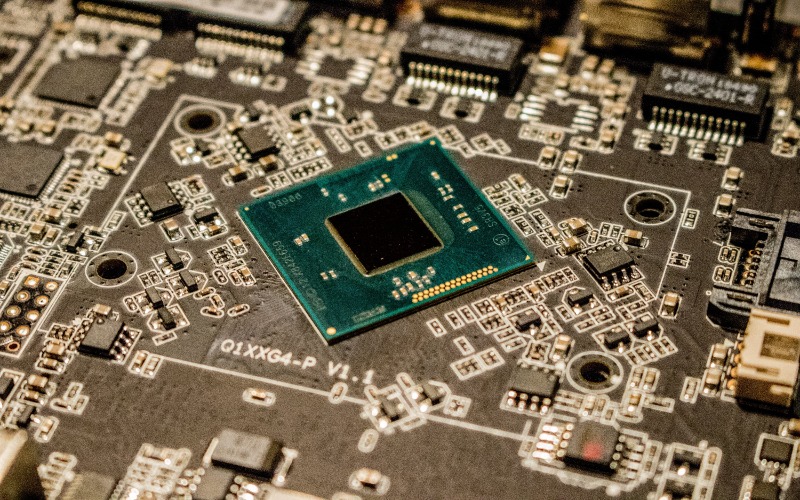Not long ago, computers took up the space of entire apartments, composed of complex, massive switches to send data to and from devices. Now, smart devices and wearable tech have all that potential condensed into tiny chips. It was the power of semiconductors and innovative material use that propelled humanity into a new age of more affordable, scalable tech. How will the impacts of semiconductors manifest as technology sees another revolutionary shift with artificial intelligence and the Internet of Things?
Rewiring Manufacturing and Production
Semiconductors propel manufacturing in a few ways. First, they entice companies to implement them in their manufacturing machinery. Secondly, it makes organizations hesitant to rely on semiconductors to change their strategies and put them in new products.
Industries that were previously non-digital have to move in that direction. They must embrace and integrate offerings like artificial intelligence and the Internet of Things in their products to stay competitive, which increases their reliance on semiconductors. For example, sectors like the banking and home appliance spheres use semiconductors already, but not with the same frequency and urgency as smartphones or GPU processing corporations.
Industries that are not leading the charge in research and development for semiconductor utilization will adjust their entire operations to support semiconductor inclusion and ramping efforts. When businesses choose semiconductors over other outdated technology, they realize their manufacturing process smoothens with everything from more precise cutting dies to more independent SCARA robots. There are few short circuits and delays because semiconductors are more trustworthy.
Everyone from procurement to advertising must alter their scopes as they get more creative and innovative in melding their products with modern semiconductors. The cycle continues until the market demand for semiconductors expands to atypical industries.
Normalizing Renewable Energy
The energy- and resource-intensive semiconductor industry may be the ironic solution to perpetuating the green energy landscape. How could a carbon-heavy operation offset itself with the power of renewable energy?
Modern semiconductors are required for wind turbines and solar panels because they minimize radiant heat. As these technologies produce power, much of that runs away as heat in older models, decreasing their efficiency and potential for public buy-in.
New semiconductors minimize that loss, allowing them to produce more electricity for communities. It increases their intrinsic value, making it easier for everyone to justify installation and investment.
Empowering 5G and the IoT
Semiconductors prove their continued relevance with the advancement of 5G. They rose in value after the normalization of 5G in smartphones, proving semiconductors will always fall in favor with new tech. Before 5G, telecommunications were stuck below 3GHz. More was necessary to match smartphone sales, but semiconductors were the puzzle piece jettisoning telecommunications into new speeds.
Enterprises selling traditional technologies like regular TVs versus smart TVs saw decreased favor as more people acclimated to high-speed internet connectivity. It empowered traditional technology makers to invest in modern, IoT-compatible semiconductors to construct new products for modern audiences. Eventually, semiconductors might be the reason tech like conventional TVs becomes obsolete.
Bolstering Self-Driving Cars and EVs
Cars use thousands of semiconductors in a single unit. Optimizing their usage will make personal and commercial autonomous vehicles and EVs commonplace. Here are some of the ways this could look in the future:
- Smart public transit that automatically notifies riders of stops with 5G and Wi-Fi
- Improved sensors for self-driving cars — like LiDAR — to detect obstructions and road lines better
- Regulated temperatures in EVs to minimize thermal runaway, increasing longevity of the parts
- Spread access to cheaper, greener mobility options like semiconductor-powered scooters, bikes, and mopeds for public use
- Bettering GPS for more optimized rerouting and management of traffic flow
Enhancing Medtech
Medtech has seen a resurgence in the last decade, primarily with non-prescription wearables like smartwatches. Everyone wants to monitor their blood pressure and heart rate accurately. Medical professionals want to enhance the efficacy of life-saving medtech — like pacemakers and internal defibrillators, among others.
Simultaneously, healthcare workers want to diagnose and treat visitors more expediently. How are semiconductors the reason devices are more dependable and seamless to integrate into patients’ lives and healthcare staff’s workflows?
The smaller semiconductors become, the more practical they become. Bulky medical equipment for personal or hospital use bogs patient attention and increases medical stigma. The miniaturization of semiconductors brings medtech closer to home and more accessible to transport, whether for internal monitoring or collecting bedside vitals in a pinch. They also make imaging faster to order and more detailed.
Additionally, they enable wireless communication between medical devices. A home heart monitor can send signals and automated updates to a cardiologist. If it reaches potentially harmful levels, emergency services can arrive at the door before the situation worsens. In massive hospitals, remote patient monitoring is more robust, easier to parse, and more reliable.
Why Semiconductors Are the Backbone of Modern Society
Semiconductors are the reason new tech is becoming more efficient and competent. All companies — regardless of sector — realize how they may instigate a mindset and product shift. Leveraging semiconductor technology can overcome industry obstacles, unleash potential in stagnant products, and unlock productivity. This is why it will be one of the most demanding and profitable industries of the next decade.









